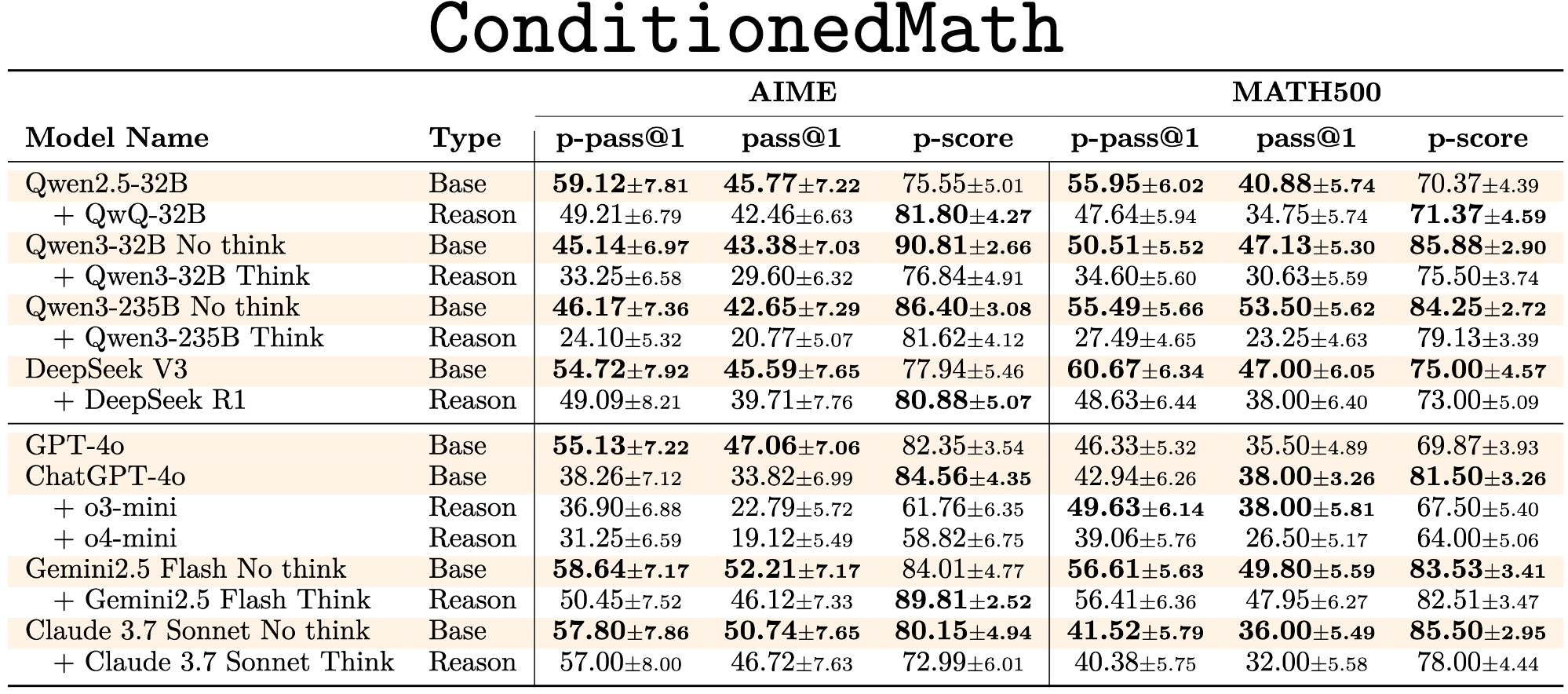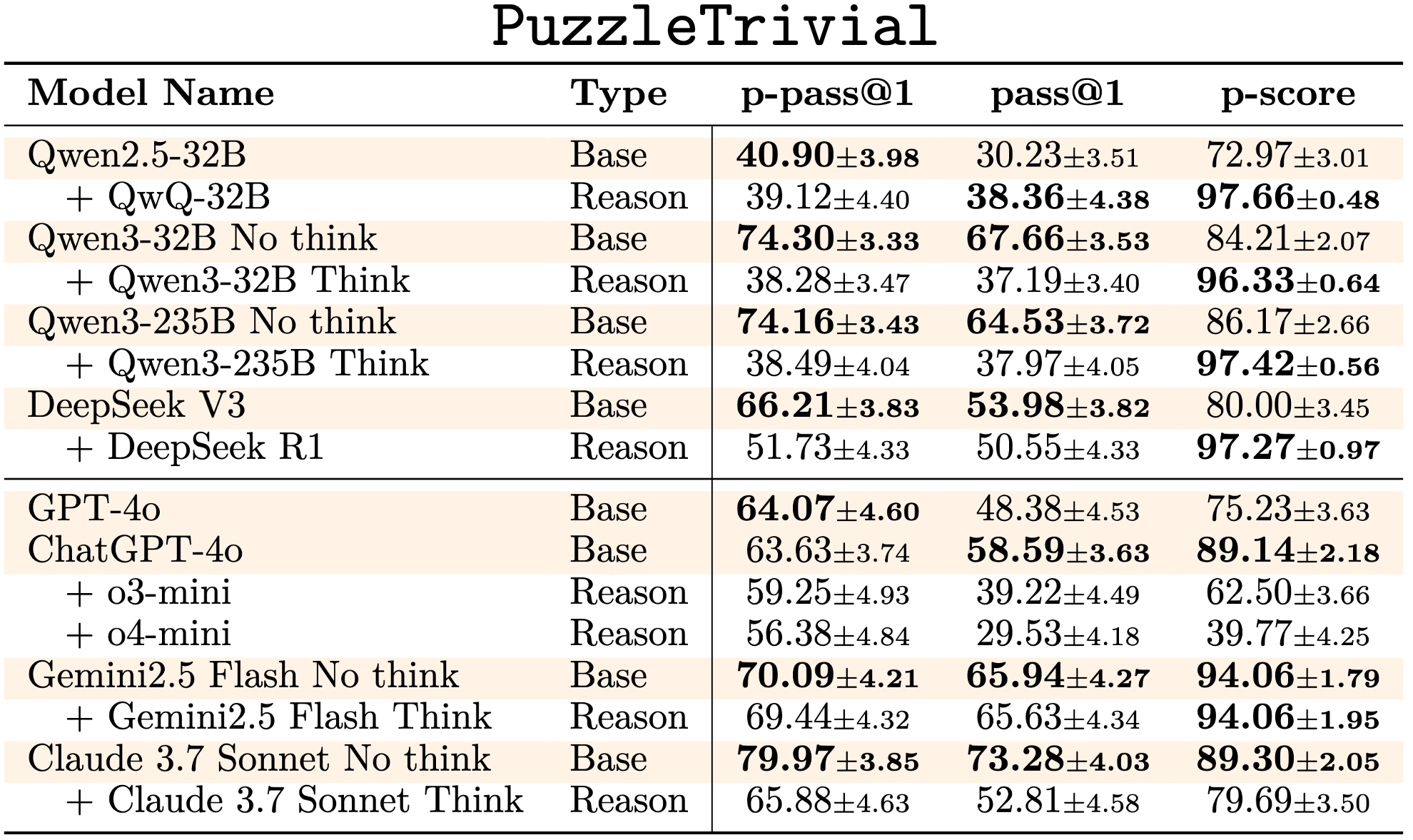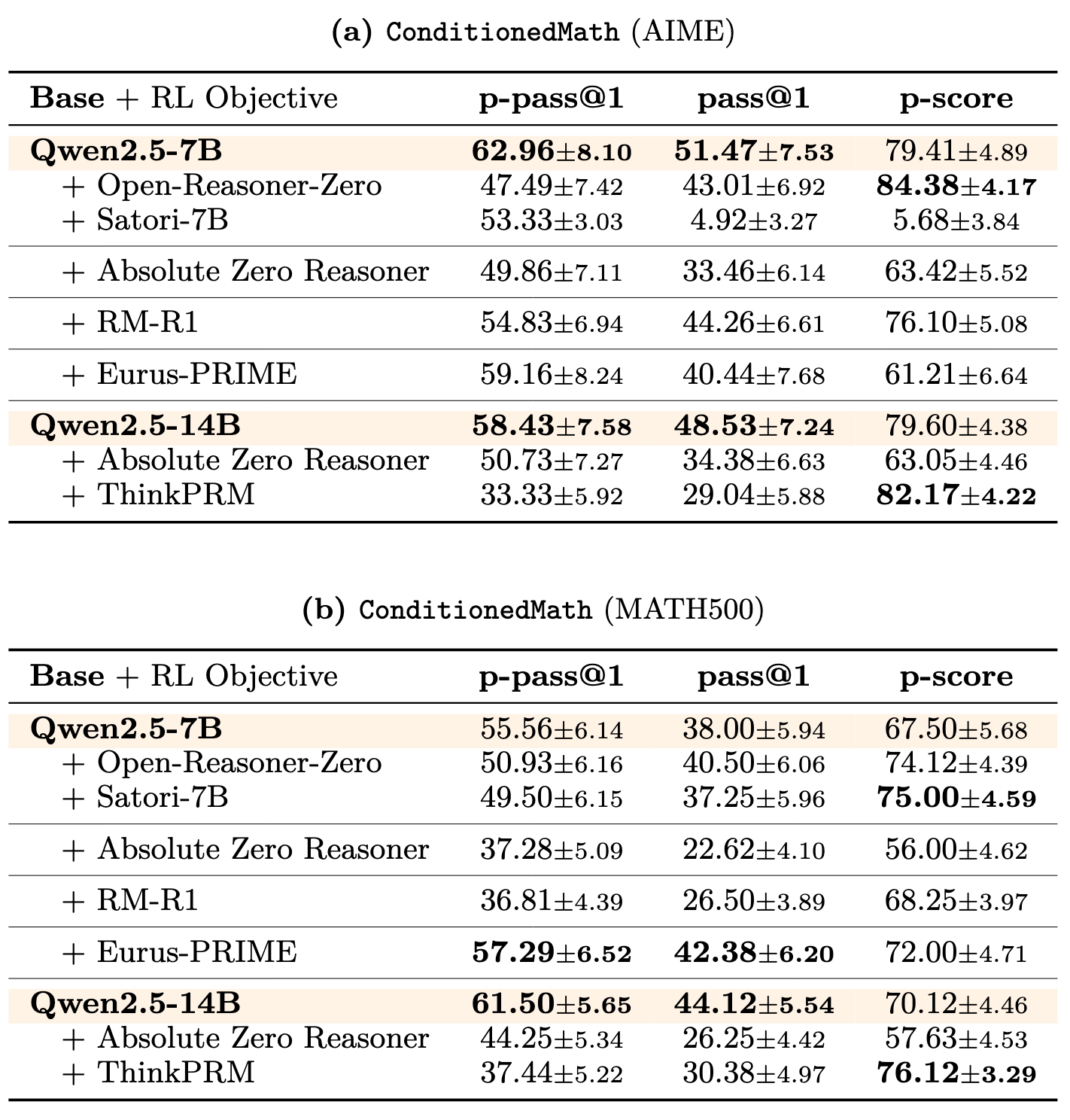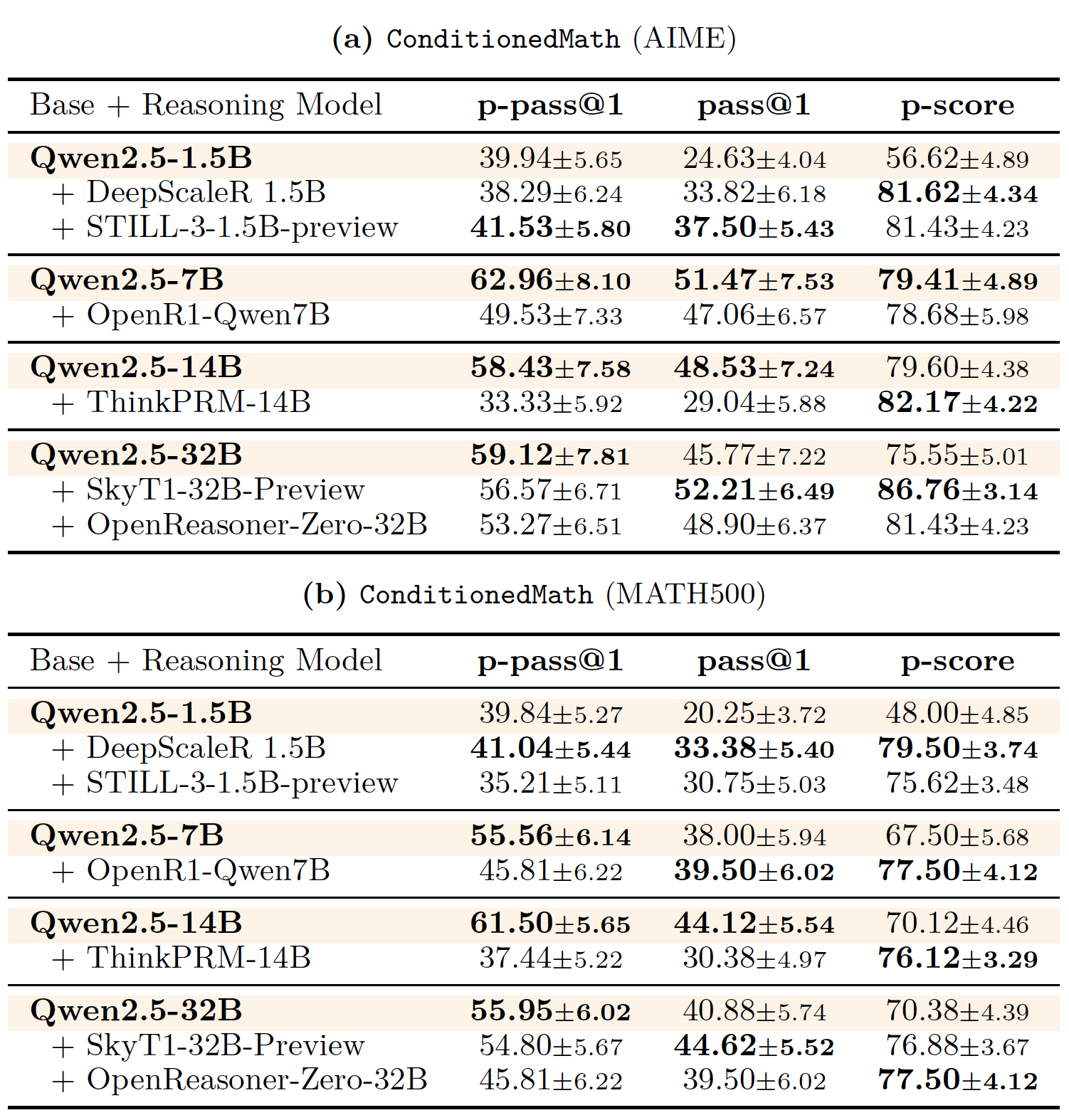Large language models have demonstrated remarkable proficiency in long and complex reasoning tasks.
However, they frequently exhibit a problematic reliance on familiar reasoning patterns, a phenomenon we
term reasoning rigidity. Despite explicit instructions from users, these models often override
clearly stated conditions and default to habitual reasoning trajectories, leading to incorrect
conclusions. This behavior presents significant challenges, particularly in domains such as mathematics
and logic puzzle, where precise adherence to specified constraints is critical. To systematically
investigate reasoning rigidity, a behavior largely unexplored in prior work, we introduce a expert-curated
diagnostic set, ReasoningTrap. Our dataset includes specially modified variants of existing
mathematical
benchmarks, namely AIME and Math500, as well as well-known puzzles deliberately redesigned to require
deviation from familiar reasoning strategies. Using this dataset, we identify recurring contamination
patterns that occur when models default to ingrained reasoning. Specifically, we categorize this
contamination into three distinctive modes: (i) Interpretation Overload, (ii) Input Distrust, and (iii)
Partial Instruction Attention, each causing models to ignore or distort provided instructions.
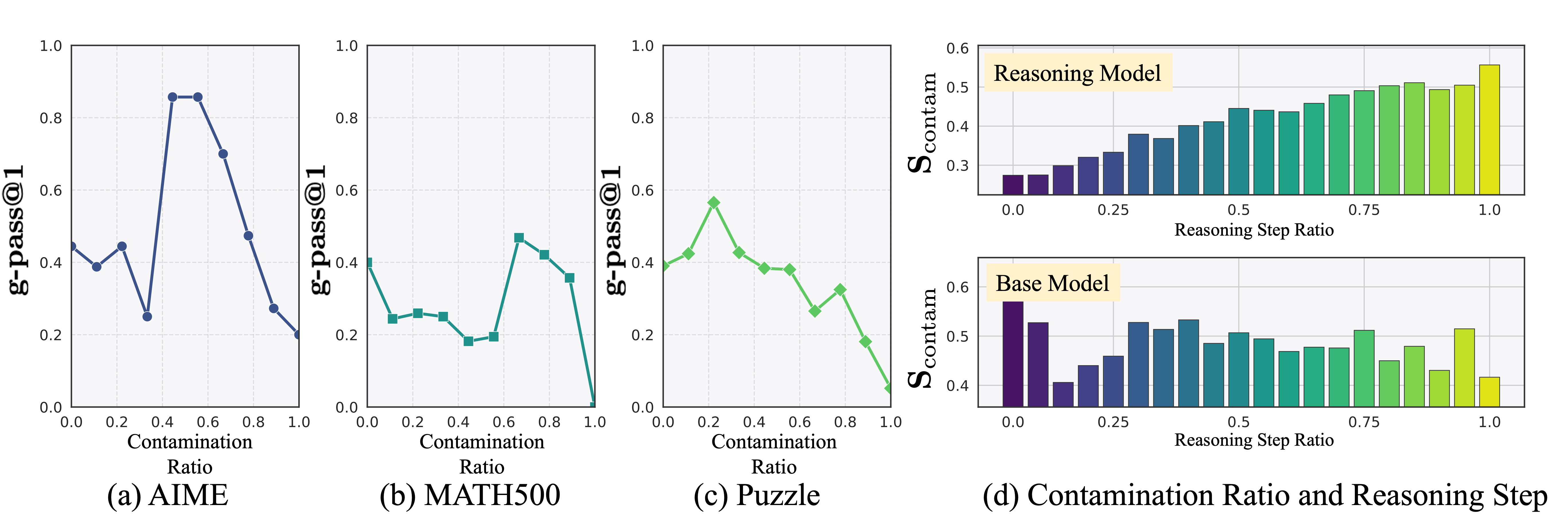
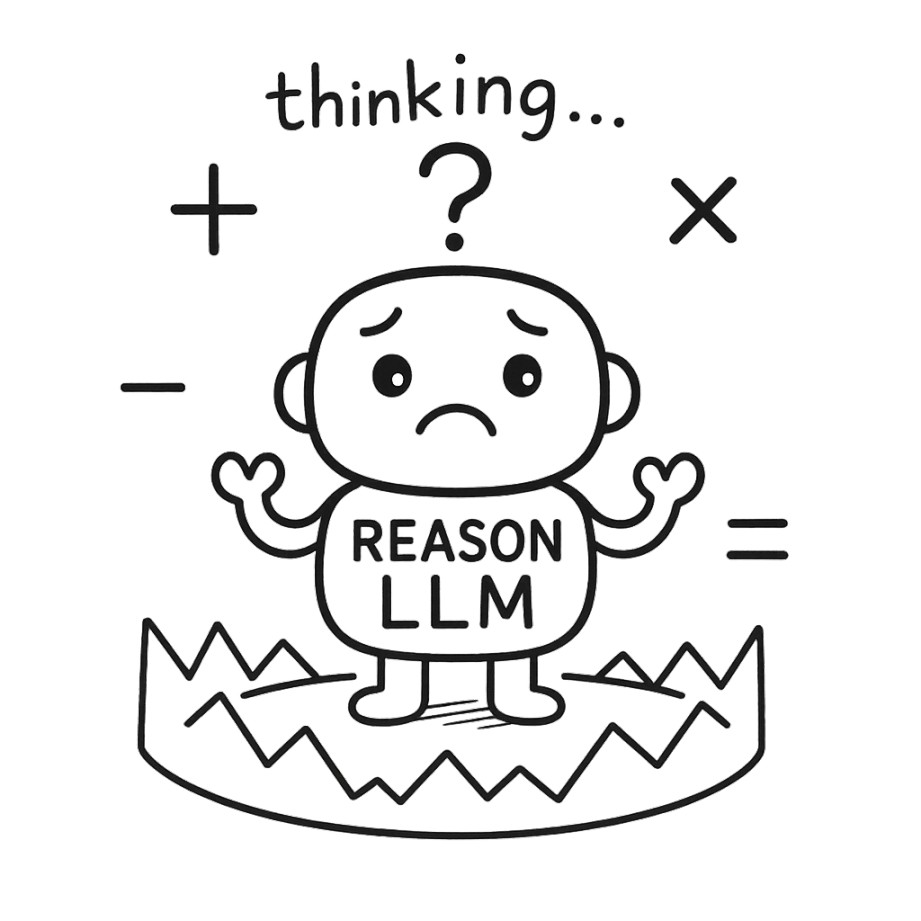 Reasoning Model is Stubborn:
Reasoning Model is Stubborn:




